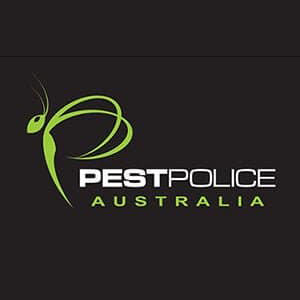Termites, those tiny yet destructive pests, can wreak havoc on our homes and buildings, silently causing extensive damage that often goes unnoticed until it’s too late. As homeowners and property owners, we are constantly on the lookout for effective termite control methods to protect our investments.
One such method that has gained popularity in recent years is termite baits. But do these baits really work? Are they reliable solutions to combat termite infestations?
In this blog, we delve into the truth about termite baits, exploring their effectiveness, understanding their mechanisms of action, evaluating scientific studies, and uncovering real-world success stories. By the end, you’ll have a comprehensive understanding of termite baits and whether they truly live up to their claims.
Understanding Termite Behavior and Damage
Termites, with their insatiable appetite for timber and cellulose-based materials, can silently wreak havoc on our homes and buildings. To effectively combat these destructive pests, it is crucial to understand their behaviour and the extent of the damage they can cause.
In this section, we will delve into the fascinating world of termites, examining their behaviour and biology, as well as the damage they inflict on structures.
Termite Behaviour: Social Insects at Work
Termites are fascinating social insects that live in highly organised colonies. Understanding their behaviour is crucial for effective termite control. Let’s explore the structure of termite colonies, their feeding habits, nesting behaviour, and communication methods.
- Colony Structure and Hierarchy
Termite colonies have distinct castes with specific roles. The queen oversees reproduction and has a long lifespan. Workers are responsible for foraging, nest maintenance, and caring for the young. Soldiers defend the colony using specialised jaws or chemical defences. Reproductives, known as alates or swarmers, establish new colonies.
- Feeding Habits and Nesting Behaviour
Termites consume cellulose from wood and plants. Feeding preferences vary among species, with drywood termites targeting wooden furniture and subterranean termites attacking underground structural elements. Termites construct nests in various materials, such as soil or wood, to regulate moisture and provide protection, depending on the termite species.
- Communication and Swarm Behaviour
Termites communicate using chemical signals called pheromones, conveying information about food, danger, and mating. They also use vibrations as an alarm system to alert the colony to potential threats. Some termite species engage in swarming behaviour during reproductive cycles, where winged alates emerge in large numbers to mate and form new colonies.
Understanding Termite Damage
Termites cause significant damage to structures, making it crucial to understand their destructive behaviour. In this section, we’ll explore how termites feed on timber, the types of damage they cause, their impact on structural integrity, and other damaging behaviours exhibited by different termite species.
- Wood-Feeding Behaviour
Termites digest cellulose with specialised digestive systems, breaking down wood and plant material. They create damage in the form of surface tunnels, galleries, and hollowed-out areas as they feed on wood.
- Effects on Structural Integrity
Termites can compromise the stability and safety of buildings through continuous feeding and tunnelling. Structural elements like beams, joists, and supports can weaken over time, potentially leading to collapse or failure.
The extensive and costly damage caused by termites emphasises the importance of early detection and effective control. Undetected infestations pose risks as termites consume wood internally, making it difficult to detect until significant damage has occurred.
Vigilance and preventive measures are crucial to minimise the risks associated with undetected termite activity.
- Other Damaging Behaviours
Different termite species have distinct behaviours that contribute to structural damage. Subterranean termites create mud tubes and directly attack foundations, compromising their integrity. Drywood termites infest wooden furniture and structures, posing challenges for eradication and control.
Signs of Termite Infestation
Detecting termite infestations early is crucial for effective control and minimising damage. In this section, we will explore the signs that indicate the presence of termites, both externally and internally.
1. External Indicators
External signs of termite infestation can include the following:
- Mud tubes and tunnels on exterior walls or foundations: Subterranean termites construct mud tubes as a means of protection and moisture retention while they forage for food sources.
- Swarmers or discarded wings near windows or light sources: When termites reproduce, winged alates or swarmers emerge in large numbers. Finding discarded wings or swarmers near windows or light sources is an indication of termite activity.
2. Internal Indicators
Internally, the following signs may suggest a termite infestation:
- Hollow-sounding wood or weakened structures: Termites hollow out wood as they feed, leaving it hollow and weakened. Tapping on infested wood may produce a hollow or papery sound.
- Accumulation of frass (termite droppings) in infested areas: Termites excrete frass, which resembles small wood-coloured pellets or sawdust-like material. Finding frass in concentrated areas is a strong indication of termite presence.
By understanding termite behaviour and the damage they can cause, homeowners and property owners can take proactive measures to protect their structures. Early detection and swift action are key in preventing extensive damage and the costly repairs associated with termite infestations.
Stay tuned as we explore the efficacy of termite baits as a control method in the subsequent sections of this blog.
How Termite Baits Work?
Termite baits are effective in controlling termite infestations. These baits consist of cellulose materials infused with a slow-acting toxicant. When termites feed on the bait, they ingest the toxicant and carry it back to the colony, spreading it to other members, including the queen. Over time, the toxicant eliminates the entire colony.
It’s important to note that termite baits require patience and regular monitoring to achieve results. They offer a targeted and environmentally friendly approach to termite control, reducing the need for widespread insecticide use. Consulting with a pest control professional is advisable for proper bait placement and monitoring.
Evaluating the Effectiveness of Termite Baits
Evaluating the effectiveness of termite baits is crucial to ensure effective termite control.
Here are key steps to assess the performance of termite baits:
- Monitoring Stations – Regularly inspect the bait stations to monitor termite activity. Check for signs of feeding, such as the presence of termites or consumption of the bait.
- Bait Consumption – Observe the extent of bait consumption by termites. A decrease in bait levels indicates that termites are feeding on the bait, a positive indicator of effectiveness.
- Colony Elimination – Monitor the overall termite population to determine if the colony is being eliminated. Decreased termite activity and reduced damage to structures are signs of successful baiting.
- Professional Assessment – Consult with a pest control professional for a comprehensive evaluation. They can assess the progress of termite control, conduct additional inspections, and provide expert recommendations.
- Regular Replenishment – Maintain the bait stations by replenishing them as needed. Regularly replenishing the bait ensures a continuous supply for termite feeding and increases the likelihood of colony elimination.
By following these steps and seeking professional guidance, you can effectively evaluate the performance of termite baits and take necessary measures to ensure successful termite control.
Factors Affecting the Success of Termite Baits
The success of termite baits in controlling termite infestations can be influenced by several key factors. Understanding these factors is crucial for achieving optimal results.
Here are the main factors that can impact the effectiveness of termite baits:
- Bait Selection – Choosing the right type of bait is essential. Different termite species may have varying preferences, so selecting a bait that targets the specific termite species infesting your property increases the chances of success.
- Bait Placement – Proper placement of bait stations is critical. Placing them in areas with known termite activity, such as near mud tubes or areas of visible damage, increases the likelihood of termites finding and feeding on the bait.
- Quantity and Accessibility – Sufficient bait quantity is important to accommodate the size of the termite colony. Placing an adequate number of bait stations ensures that enough termites can access the bait and distribute it within the colony.
- Environmental Factors – Environmental conditions can affect termite behaviour and feeding patterns. Factors such as temperature, moisture levels, and soil composition can influence termite activity and the effectiveness of the bait. It is essential to consider these factors when implementing termite-baiting strategies.
- Monitoring and Maintenance – Regular monitoring of bait stations and timely replenishment of bait is crucial for sustained effectiveness. Monitoring allows for early detection of termite activity and ensures a continuous supply of bait for feeding.
- Professional Expertise – Seeking the guidance of a qualified Melbourne pest control professional is highly recommended. Professionals have the knowledge and experience to assess the specific factors impacting termite control, provide tailored recommendations, and ensure proper implementation of baiting strategies.
By considering these factors and taking appropriate measures, you can enhance the success of termite baits and effectively manage termite infestations.
Common Misconceptions About Termite Baits
When it comes to termite baits, several misconceptions can lead to misunderstandings about their effectiveness. It’s important to separate fact from fiction to make informed decisions about termite control.
Here are some common misconceptions about termite baits:
Instant Elimination
- Misconception: Termite baits provide immediate results, completely eliminating the termite colony in a short time.
- Reality: Termite baits are designed for long-term control. They work gradually, allowing the toxicant to spread through the colony over time. Complete elimination can take weeks or even months, depending on the size and activity of the colony.
One-Time Solution
- Misconception: Once termite baits are deployed, there is no need for further treatment or monitoring.
- Reality: Termite baiting requires ongoing monitoring and maintenance. Regular inspections and replenishment of bait stations are necessary to ensure continuous termite control. Without proper maintenance, reinfestation may occur.
Universal Effectiveness
- Misconception: Termite baits work equally well for all termite species.
- Reality: Different termite species have distinct feeding preferences and behaviours. Choosing the right bait formulation and targeting the specific termite species infesting your property is crucial for effective control.
DIY Effectiveness
- Misconception: Termite baiting can be effectively done as a do-it-yourself (DIY) project without professional assistance.
- Reality: While DIY baiting kits are available, proper implementation and monitoring require expertise. Consulting with a qualified pest control professional is advisable to ensure correct bait placement, and monitoring, and to address any challenges that may arise during the process.
Immediate Visible Effects
- Misconception: The presence of dead termites around bait stations is a sign of successful termite control.
- Reality: Termite baits work slowly and may not result in immediate visible effects. Dead termites near bait stations can indicate feeding activity, but it does not necessarily mean the entire colony has been eliminated. Continued monitoring is crucial to evaluate long-term success.
By debunking these misconceptions, you can approach termite baits with realistic expectations. Consulting with a pest control professional and staying informed about the proper use and maintenance of termite baits will help you make informed decisions and effectively manage termite infestations.
Ready to protect your property from termite infestations? Pest Police Australia is your trusted partner in pest control. With our expert team and state-of-the-art solutions, we provide comprehensive termite inspection, prevention, and treatment services.
Don’t let termites compromise the integrity of your home or business. Take action now and schedule a consultation with us today!

